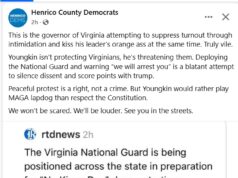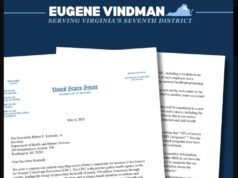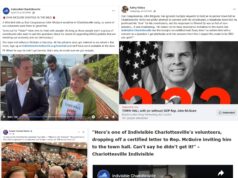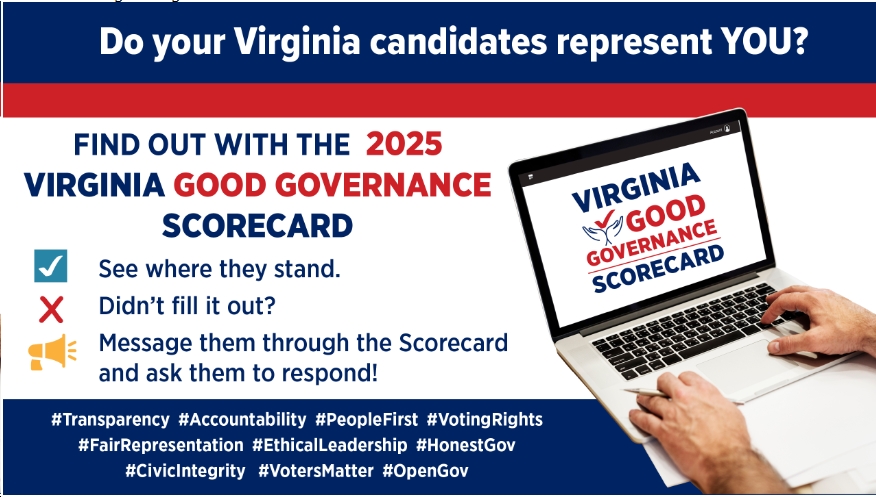( – promoted by lowkell)
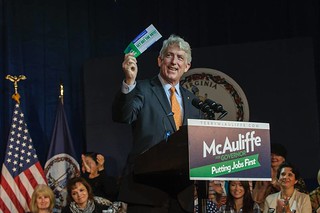 In 2005, Senator Creigh Deeds lost the race for Attorney General to then Delegate Bob McDonnell by just over 300 votes. It set McDonnell up for his run for Governor four years later, forcing Bill Bolling to step aside. Just minor changes to the outcome on election day in 2005 would have almost certainly produced a Deeds vs. Bolling match-up in 2009. Deeds may well have lost, but who knows how things would have developed for Virginia …
In 2005, Senator Creigh Deeds lost the race for Attorney General to then Delegate Bob McDonnell by just over 300 votes. It set McDonnell up for his run for Governor four years later, forcing Bill Bolling to step aside. Just minor changes to the outcome on election day in 2005 would have almost certainly produced a Deeds vs. Bolling match-up in 2009. Deeds may well have lost, but who knows how things would have developed for Virginia …
Today, we may be facing a very similar fork in the political road. Republicans are going all in for State Senator Mark Obenshain of Harrisonburg. Should he win, it will almost guarantee that the 2017 Governor’s race will be between Obenshain and Northam. Ben Tribbett has already expressed concerns about Ralph Northam as the Gubernatorial nominee in four years. In my opinion, choices are good and Virginia Democrats would do well to keep their options open.
Furthermore, if Obenshain wins, he’ll have four years building a record to run on in 2017. Cuccinelli lost the race for Governor by being too extreme during his time in the AG’s office, waging a war against science at the University of Virginia and prioritizing defending bans on sex in court. We can hope that Obenshain is that stupid, but we should fear him finding un-offensive issues like human trafficking, drugs, and defending the elderly that hide his conservatism from the public eye in 2017.
Without Obenshain, the Republicans will be in disarray in 2017, as the growing discontent expressed from Republicans like Bill Bolling and Tom Davis will be aired out in the open by more members during any nomination fight. The party could do some soul searching and come up with a moderate nominee in 2017, but more likely an effort to run a moderate will result in a bloody, brutal primary (or convention).
We need Mark Herring to win. How could that happen?
Lucky for Herring, he will be riding a Democratic wave in the closing days of the campaign. At the debate in Blacksburg, Cuccinelli made desperate bids to awaken his base and close the gap, but it was clear that he was not making an effort to win over swing voters. This was a salvage effort to give Obenshain a better chance at pulling off victory. And it might not be enough.
Let’s look at the 2012 exit polls to see how Obama put together a winning coalition in Virginia, and compare it to the 2013 polling from Part I in this series. There’s also this handy graphic from the Washington Post comparing Deeds and McAullife, from the Washington Post’s mid-September poll.

DC Suburbs, 18% of Marist Poll in 2003, 18% of 2009 Exit Poll, 18% of 2012 Exit Poll
Obama: 63%
Romney: 36%
Kaine: 64%
Allen: 36%
McAullife: 56%
Cuccinelli: 34%
Sarvis: 4%
W/O Sarvis
McAullife: 55%
Cuccinelli: 38%
Northam: 54%
Jackson: 39%
Republicans are doing slightly better here than in 2012, although Democratic performance here is at such high levels to start it’s hard to approach presidential performance in lower turnout years. This area includes some districts, like the 47th (Hope), 48th (Brink), and 45th (Krupicka) where Deeds in 2009 received a vote share almost at Obama’s 2008 and 2012 levels, even with his landslide defeat statewide. These are solid, Democratic districts in the inner core around DC. The drops in performance will be in districts farther out in Fairfax, but even there it’s looking good. In the 34th, which because of redistricting now spreads beyond the DC Suburbs to the Northern Virginia exurbs too, has McAullife up 54% to 39% in internal numbers, and that’s a bit better than I’d expect from the statewide polling.
In 2012, there was little dropoff between Obama and Kaine. We see similar numbers between McAullife and Northam. Most Sarvis voters go to Cuccinelli and E.W. Jackson. Beltway Libertarians like Ed Crane may be backing Sarvis, but they’ll vote GOP for the rest of the ticket.
Northern Virginia Exurbs, 16% of Marist Poll, 14% of 2009 Exit Poll, 16% of 2012 Exit Poll
Obama: 49%
Romney: 50%
Kaine: 51%
Allen: 49%
McAullife: 42%
Cuccinelli: 42%
Sarvis: 7%
W/O Sarvis
McAullife: 49%
Cuccinelli: 44%
Northam: 40%
Jackson: 46%
By stretching down to include Fauquier, Stafford, and Spotsylvania, the Northern Virginia Exurbs are more competitive than you’d think than just looking at Prince William and Loudoun. With Northam down, and the Sarvis vote leaning heavily Democratic for the second choice, this reinforces my lesson from part I that this is the Ohio of 2013. Washington Post’s poll tells a similar story, this is still a purple region. That McAuliffe has a commanding statewide while doing no better than Obama did in this swing region is a big sign of significant changes in the rest of the state.
This is a major region for all Democrats in the closing days. McAuliffe and Northam may have their races all but won, but Herring needs significant help here.
Western & Central Virginia, 23% of Marist Poll, 23% of 2009 Exit Poll, 22% of 2012 Exit Poll
Obama: 38%
Romney: 61%
Goode: 1%
Kaine: 39%
Allen: 61%
McAuliffe: 36%
Cuccinelli: 41%
Sarvis: 14%
W/O Sarvis
McAuliffe: 43%
Cuccinelli: 52%
Northam: 39%
Jackson: 51%
This has become a major theme of the campaign, Cuccinelli’s struggles in coal country. Republicans are under-performing; they have to hope that undecided voters break Republican in order to save Herring. National outlets are focused on how McAuliffe is running a more liberal campaign that ignores traditional issues used to campaign in rural Virginia, but the fact is his campaign has minimized their losses in Western and Central Virginia even without pandering on God, guns, and gays. Take that Mudcat!
The reality is that McAuliffe has run up Cuccinelli’s negatives in Southwest Virginia, and that in turn is driving up Sarvis’s vote. But in a head-to-head, the negative views of Cuccinelli are not enough to convince dissatisfied voters to back a Democrat. And let’s manage expectations – McAuliffe running around five points ahead of Obama’s 2012 numbers is still putting Democrats behind, and I don’t think it puts any local races in play.
Richmond & Eastern Virginia, 23% of Marist Poll, 26% of 2009 Exit Poll, 25% of 2012 Exit Poll
Obama: 51%
Romney: 49%
Kaine: 52%
Allen: 48%
McAuliffe: 47%
Cuccinelli: 38%
Sarvis: 8%
W/O Sarvis
McAuliffe: 56%
Cuccinelli: 39%
Northam: 50%
Jackson: 38%
Who are these Sarvis voters? This is a swing region with a number of seats in the Richmond suburbs that could be more competitive in the next decade. Too bad Democrats didn’t recruit candidates in any of them. Figuring out how Democrats can run ahead of Obama’s numbers in low-turnout elections could help the party pick up unexpected seats in the House of Delegates. Democrats are already close to Obama’s performance, any ability to court undecideds and Sarvis voters is a big upside. And Richmond TV is a lot more affordable than Northern Virginia …
The conservative Richmond Times-Dispatch backed a ticket of No-One, Northam, and Obenshain. The region’s swing voters may pull a similar zig-zag down the races. An Obenshain victory may come from giving lean-Republican voters in Richmond a reason to turn out and vote.
Tidewater, 20% of Marist Poll, 18% of 2009 Exit Poll, 18% of 2012 Exit Poll
Obama: 56%
Romney: 42%
Kaine: 57%
Allen: 43%
McAuliffe: 50%
Cuccinelli: 31%
Sarvis: 10%
W/O Sarvis
McAuliffe: 52%
Cuccinelli: 39%
Northam: 53%
Jackson: 35%
Democrats are behind Obama’s numbers, but Republicans are clearly struggling to connect here. Sarvis is taking support primarily from Cuccinelli and Jackson is performing poorly. The big question is does this extend down-ballot to Obenshain and the local delegates.
Virginia is about to elect a Beltway Democrat because the voters outside of Northern Virginia are utterly disgusted by the Republican candidate. McAuliffe as Governor is going to have to lead a party that, because of gerrymandering, is extremely limited in its appeal across the rest of the state. The Attorney General’s race will be the best test to see the mood of Virginians on election day.


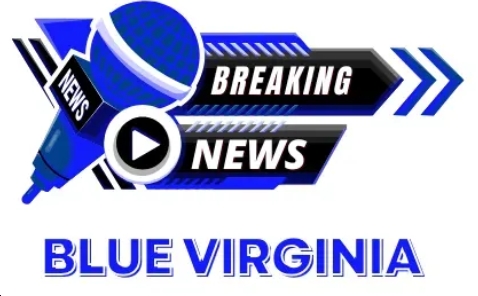 Sign up for the Blue Virginia breaking news newsletter
Sign up for the Blue Virginia breaking news newsletter